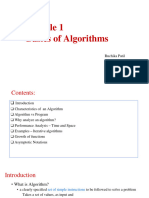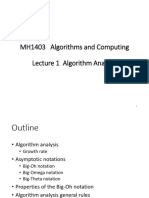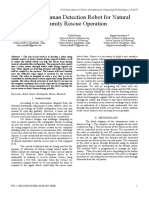0% found this document useful (0 votes)
19 views6 pagesFundamentals of Algorithms - UNIT I
The document outlines the fundamentals of algorithms, including their specification, pseudocode representation, and performance analysis focusing on time and space complexity. It discusses asymptotic notation (Big O, Omega, Theta, and Little O) for evaluating algorithm efficiency and introduces randomized algorithms, detailing their characteristics, advantages, and disadvantages. The document emphasizes the importance of both theoretical analysis and empirical measurement in understanding algorithm performance.
Uploaded by
202300327Copyright
© © All Rights Reserved
We take content rights seriously. If you suspect this is your content, claim it here.
Available Formats
Download as DOCX, PDF, TXT or read online on Scribd
0% found this document useful (0 votes)
19 views6 pagesFundamentals of Algorithms - UNIT I
The document outlines the fundamentals of algorithms, including their specification, pseudocode representation, and performance analysis focusing on time and space complexity. It discusses asymptotic notation (Big O, Omega, Theta, and Little O) for evaluating algorithm efficiency and introduces randomized algorithms, detailing their characteristics, advantages, and disadvantages. The document emphasizes the importance of both theoretical analysis and empirical measurement in understanding algorithm performance.
Uploaded by
202300327Copyright
© © All Rights Reserved
We take content rights seriously. If you suspect this is your content, claim it here.
Available Formats
Download as DOCX, PDF, TXT or read online on Scribd
/ 6






















































































